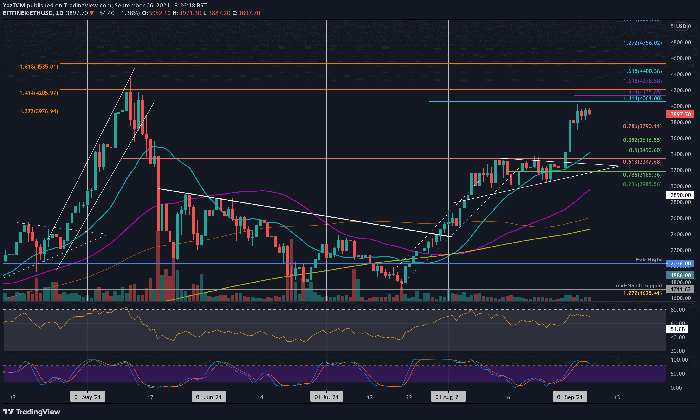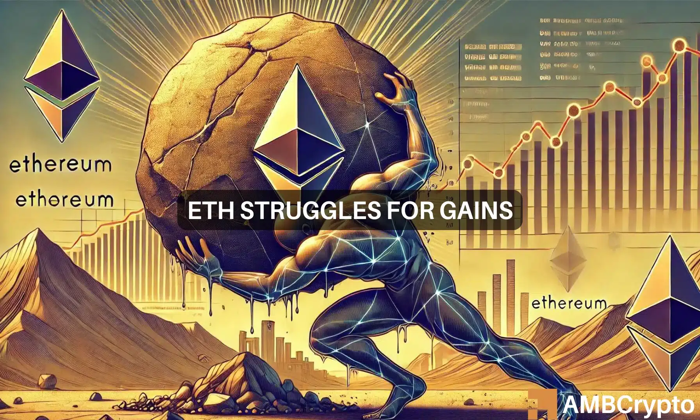USDT on Tron has reached an impressive milestone, with its circulating supply hitting $73.8 billion, thereby surpassing Ethereum for the very first time in history. This remarkable shift highlights the growing trend of stablecoin migration from Ethereum to the Tron network, largely driven by Ethereum’s notorious gas fees and its scalability challenges. Investors and traders alike are drawn to Tron’s advantages, such as lightning-fast transaction speeds and significantly lower costs, making it the preferred platform for high-volume transfers. As Tether supply growth on Tron continues to accelerate, it’s clear that the stablecoin landscape is evolving with Tron’s burgeoning ecosystem at the forefront. With Tron USDT surpassing Ethereum, the race in the stablecoin market is reshaping financial transactions, especially in emerging markets.
The notable transition of Tether’s USDT to the Tron blockchain signifies a groundbreaking development in the cryptocurrency realm. As more users gravitate towards this innovative network, the allure of lower transaction fees and efficient processing times is becoming undeniable. This shift not only reflects a broader adoption of digital stablecoins but also challenges the traditional dominance of Ethereum in this space. With the surge in Tron’s stablecoin activity, new opportunities for cross-border remittance and high-volume trade are emerging rapidly. Ultimately, the evolving dynamics in the cryptocurrency market highlight the significance of network capabilities and transaction efficiencies as users seek more viable alternatives.
Understanding the Shift to USDT on Tron
The recent surge of USDT on the Tron network highlights a significant shift in the cryptocurrency landscape, particularly as it surpasses Ethereum in stablecoin supply for the first time. This transition can be attributed to Tron’s lower transaction fees and faster processing capabilities, which have become increasingly appealing to users who were previously reliant on Ethereum for their stablecoin needs. As the crypto market continues to evolve, the advantages offered by Tron, such as scalability and efficiency, are drawing in a more extensive user base eager to capitalize on the benefits of using USDT on the TRC-20 network.
Moreover, the growth in USDT supply on Tron is reflective of broader trends in stablecoin utilization. As global adoption of cryptocurrencies rises, users are increasingly looking for platforms that provide reliability and cost-effectiveness. This shift is evident not only in individual transactions but also in the increasing presence of institutional investors utilizing stablecoins for cross-border remittances and large-scale transfers. Since mid-2023, the Tron network has seen significant growth in USDT minting, demonstrating a clear preference for its robust ecosystem as compared to the limitations imposed by Ethereum’s high gas fees.
Tron’s Advantages Over Ethereum: Lower Fees and Faster Transactions
One of the primary reasons for the migration to the Tron network is the significantly lower gas fees compared to Ethereum. Users conducting high-volume transactions quickly faced challenges with Ethereum’s escalating fees, which often made it economically impractical to transact in large amounts. With the Tron network, users benefit from negligible transaction costs, allowing for seamless transfers of USDT and making it an attractive alternative for both retail and institutional investors.
In addition to lower fees, Tron boasts faster block times, enhancing the overall user experience. The network’s structure promotes quick confirmations, which is especially advantageous for users engaged in frequent trading or high-volume remittances. As a result, many traditional finance players and new startups are now considering Tron as a reliable tool for their digital asset transactions, contributing to the ongoing trend of stablecoin growth amidst evolving market dynamics.
The Stablecoin Landscape: Tether’s Dominance and Competition
Tether’s dominance in the stablecoin market has become increasingly prominent as USDT overtakes Ethereum in supply. With more than $150 billion in circulation, Tether accounts for over 62% of the stablecoin market. This impressive figure reflects not only Tether’s established reputation but also the growing preference for USDT across various transaction types, from retail purchases to large enterprises. The decline of competing stablecoins like USDC and TUSD further underscores Tether’s stronghold in this domain.
As the stablecoin sector matures, transactions involving these digital assets have skyrocketed, surpassing those of traditional financial giants. For instance, in 2025, stablecoins were recorded to handle weekly transaction volumes that exceeded those of Visa and PayPal combined. This trend underscores the increasing acceptance and integration of stablecoins into daily transactions, indicating a shift in how value is transferred in a digital economy. With USDT leading the charge on the Tron network, its growth trajectory seems set to continue.
User Demographics: The Shift Toward Larger Wallets
Recent research has revealed that the user demographics for USDT on the Tron network are changing. Previously dominated by retail investors, the stablecoin is now seeing substantial activity from mid-sized wallets, defined as those holding between $10,000 and $1 million. This growth in participation suggests a notable shift in the demographic landscape, where OTC desks and cross-border remittance platforms are increasingly utilizing USDT for their operational needs.
This demographic shift has significant implications for how USDT is perceived not just as a digital asset but as a critical tool in facilitating international payments and trade. As more larger parties engage with USDT, it enhances the currency’s credibility, attracting even greater participation in the market. Consequently, Tron’s ability to provide the infrastructure for this increasing activity sets the stage for further growth and stability in the stablecoin sector moving forward.
The Future of USDT on Tron: Predicted Trends and Growth
As USDT on the Tron network continues to grow at an unprecedented rate, industry analysts predict that this trend will not only persist but also accelerate. The unique attributes of the Tron network, including its low fees and scalability, combined with Tether’s increasing integration into financial systems, build a robust foundation for future growth. Experts believe that as more users and institutions recognize the benefits of using USDT on Tron, we may see an even larger surge in adoption.
Moreover, Tron’s consistent investment in enhancing its infrastructure is likely to play a crucial role in maintaining its competitive edge over Ethereum and other blockchain platforms. By prioritizing technological advancements and user experience, Tron is positioning itself as a leader in the stablecoin market. The trajectory of USDT on Tron will be essential for observing how stablecoins evolve within the broader cryptocurrency ecosystem.
Comparing Gas Fees: Tron vs. Ethereum
Ethereum has long been the preferred network for many cryptocurrency transactions, but its high gas fees have become a significant barrier for users. As the demand for decentralized applications and transactions surged, gas fees on Ethereum skyrocketed, leading many traders to reconsider their options. In stark contrast, the Tron network offers an efficient alternative with virtually negligible transaction costs, enabling users to transfer USDT and other tokens without the financial burden associated with Ethereum.
This difference in cost structures has had a profound impact on user behavior. Many crypto enthusiasts now choose to transact on Tron, especially for high-volumes of USDT, where saving on fees can lead to substantial cost reductions. Furthermore, as Ethereum continues to grapple with scalability issues, Tron is seen as a burgeoning platform that accommodates the growing needs of stablecoin users, allowing for greater flexibility and ease of transaction.
The Impact of Scalability on Stablecoin Transactions
Scalability has become a pivotal concern in the realm of cryptocurrency, particularly for stablecoins like USDT. As demand for transactions increases, networks must efficiently handle numerous operations simultaneously without compromising speed or user experience. Tron’s architecture is designed to support high throughput, making it an ideal environment for USDT transactions that require rapid processing and reliability, especially in bustling markets.
In contrast, Ethereum’s historical limitations in scalability have created bottlenecks during peak periods, resulting in slow transaction times and elevated gas fees for users. These recurring challenges have fostered an environment where alternatives like Tron can thrive, demonstrating that scalability isn’t just a technical feature but a crucial factor driving user preference. It is evident that as stablecoin usage expands, the ability to efficiently manage transactions will define the future of cryptocurrency platforms.
Analyzing Tether’s Supply Growth: What Lies Ahead?
Tether’s impressive supply growth is indicative of the increasing trust and functionality of USDT within both crypto markets and traditional finance. The substantial minting of USDT on the Tron network not only reinforces Tether’s dominance but also represents confidence from investors who view stablecoins as a stable medium of exchange. With the acceleration of Tether’s supply significantly surpassing that of Ethereum, it is clear that users are gravitating towards a more efficient option for their stablecoin needs.
Looking ahead, the forecast for Tether’s supply growth appears promising. As more users and businesses recognize the tangible benefits of using USDT on Tron, we can expect the demand for stablecoins to grow exponentially. Furthermore, with ongoing developments in blockchain technology and increased acceptance of stablecoins in various sectors, Tether’s supply expansion could set a new standard for the stablecoin market, influencing the future of digital transactions.
Emerging Markets and Tron’s Role in Stablecoin Adoption
Emerging markets are becoming a significant focal point for cryptocurrency adoption, and Tron’s advantages are making it a popular choice in these regions. As many individuals and businesses in developing countries seek accessible ways to engage with digital currencies, USDT on Tron enables them to transact with minimal costs and high speed, paving the way for broader financial inclusion. This is particularly vital in areas where traditional banking infrastructure is lacking.
Moreover, Tron’s growing presence in these markets is likely to attract more users and businesses to its ecosystem. By facilitating cross-border remittances and providing a stable medium for transactions, USDT on Tron is not just enhancing financial accessibility but is also positioning itself as a key player in the evolution of payment solutions globally. The continued adoption and success of stablecoins in these regions will significantly influence their growth trajectory in the coming years.
Frequently Asked Questions
What are the advantages of using USDT on Tron over Ethereum?
USDT on Tron offers significant advantages over Ethereum, primarily due to lower gas fees and faster transaction speeds, making it more cost-effective for high-volume stablecoin transfers. As Ethereum faces scalability issues, the Tron network emerges as a preferred alternative for users seeking efficiency in transactions.
How has USDT on Tron surpassed Ethereum in supply?
USDT on Tron has surpassed Ethereum for the first time with a circulating supply of $73.8 billion compared to Ethereum’s $71.9 billion, driven by Tron’s capability to mint USDT rapidly since mid-2023, as well as its efficient network architecture that reduces transaction costs and time.
What factors contribute to the stablecoin growth of USDT on Tron?
The stablecoin growth of USDT on Tron can be attributed to several factors including lower transaction fees, quicker block times, and increased efficiency of its Super Representative (SR) system, leading to a more stable and reliable network that attracts users migrating from Ethereum.
Why are users choosing USDT on Tron for high-volume transactions?
Users are increasingly choosing USDT on Tron for high-volume transactions due to its competitive advantages over Ethereum. The lower gas fees and efficient block production capabilities of the Tron network enable seamless and cost-effective transfers, particularly important for businesses and OTC desks.
What does the supply growth of USDT on Tron indicate about market trends?
The supply growth of USDT on Tron indicates a shift in market trends towards more efficient stablecoin networks as users increasingly migrate due to high costs on Ethereum. This trend reflects broader global adoption, particularly in emerging markets where cost-effective transaction methods are crucial.
How does the increase in USDT activity on Tron affect the stablecoin market?
The increase in USDT activity on Tron significantly impacts the stablecoin market by strengthening Teddy’s market dominance and diminishing the influence of rivals like USDC and TUSD. As USDT’s market share grows, it sets the foundation for wider adoption as a preferred medium of exchange in various financial transactions.
What is the significance of USDT on Tron processing higher volumes than traditional payments?
USDT on Tron processing higher transaction volumes than traditional payment methods like Visa and PayPal illustrates the growing acceptance of stablecoins in daily transactions. This shift demonstrates the potential of blockchain technology in providing efficient payment solutions globally.
What role does the Tron network play in the future of stablecoins?
The Tron network is poised to play a significant role in the future of stablecoins by offering a robust and scalable platform for stablecoin transactions. Its ongoing innovations and optimizations in transaction efficiency could lead to further increases in supply and adoption as users look for reliable alternatives to Ethereum.
| Key Point | Details |
|---|---|
| Circulating Supply of USDT | USDT’s supply on Tron reached $73.8 billion, surpassing Ethereum’s $71.9 billion. |
| Factors for Tron’s Growth | Lower transaction fees, faster block times, and stable network reliability driven by Super Representatives. |
| Broader Adoption Trends | Shift towards mid-sized wallets ($10,000-$1 million) indicates increased activity from OTC desks and payment aggregators. |
| Stablecoin Market Dominance | Tether controls 62.05% of the stablecoin market; processing weekly transactions surpassing traditional giants. |
| Impact on TRX Token | Despite USDT growth, TRX’s price has stagnated at approximately $0.26. |
Summary
USDT on Tron has become a significant player in the cryptocurrency market, achieving a remarkable $73.8 billion in circulating supply, surpassing Ethereum for the first time. The shift towards Tron for stablecoin transactions highlights the ecosystem’s benefits such as lower fees and efficiency. As global adoption trends evolve, USDT’s dominance reflects changing user bases and transaction behaviors in the crypto landscape.
USDT on Tron has not only made headlines but has also achieved a remarkable milestone by surpassing Ethereum’s stablecoin supply for the first time ever, highlighting the transformative shift in the crypto landscape. With Tether’s circulating supply on the Tron network reaching an impressive $73.8 billion, this achievement underscores the growing demand for high-volume stablecoin transactions that thrive within Tron’s efficient ecosystem. Users are increasingly migrating to Tron due to its lower transaction costs and rapid processing speeds, effectively sidestepping the notorious Ethereum gas fees that have complicated stablecoin transfers. This shift towards Tron is further fueled by increased Tether supply growth, showcasing the network’s advantages in handling digital assets. As Tron’s dominance expands, it becomes clear that the stablecoin growth narrative is shifting, favoring eco-friendly and cost-effective platforms like Tron.
In recent months, an intriguing trend has emerged where USDT transactions have led the charge within the cryptocurrency market, overtaking traditional blockchains like Ethereum. As stablecoins gain traction due to their reliability and utility in digital finance, the performance of Tether on Tron has set a new precedent in the industry. The advantages of the Tron network, including its speed and cost-efficiency, have made it a preferred choice for those looking to navigate the complexities of crypto transactions without incurring hefty fees. Coupled with consistent Tether supply growth, this rapid adoption highlights a significant pivot in user preference towards more reliable and user-friendly solutions. Thus, as the competitive landscape evolves, understanding the dynamics of stablecoins and their operational frameworks becomes essential for stakeholders in this burgeoning digital economy.















